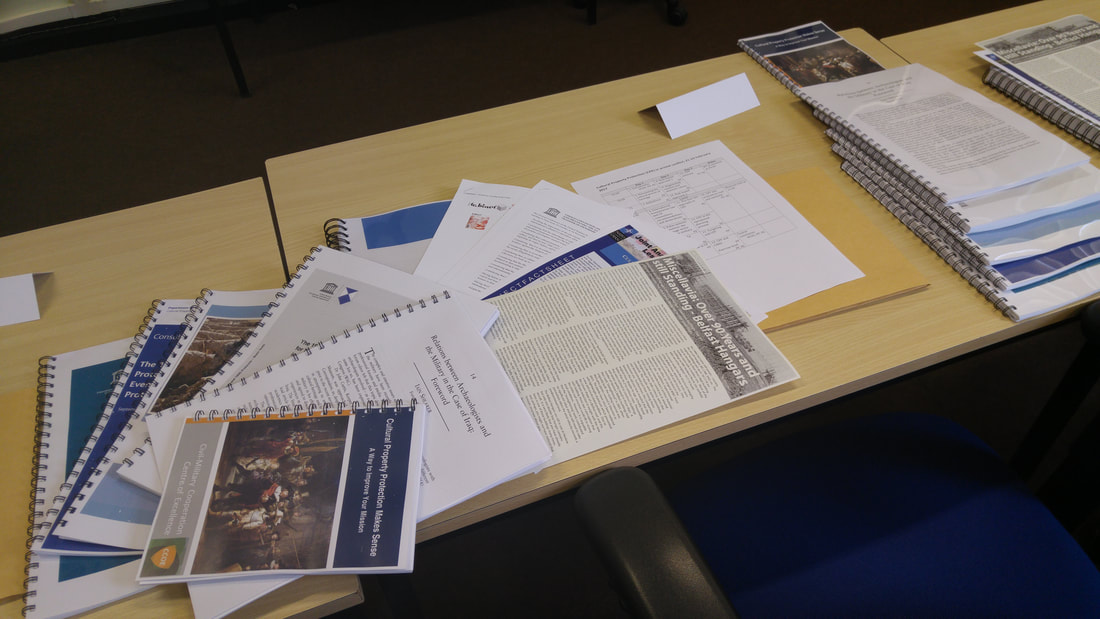Deliberate reuse of sites
Some sites are damaged by their deliberate use and reuse. Although, at first glance, this may seem to be an issue of awareness, in many cases, those occupying sites are only too aware of their historic importance. For example, military groups occupied the historic Great Umayyad Mosque in Aleppo, Syria, part of the World Heritage site, which damaged the site (before it was then heavily damaged in later fighting). Refugees, displaced by war and disaster, often reoccupy sites for shelter.
The deliberate military use of sites encompasses fortifications and trenches, military buildings, and planting landmines. The site of Carchemish in southern Turkey was mined in World War II: the mines were only removed in 2011. Sites are also reused by desperate refugees looking for shelter. There are numerous reports of the reoccupation of ancient tombs and villages by displaced people in Syria, for example. This reuse frequently heavily damages sites.
The deliberate military use of sites encompasses fortifications and trenches, military buildings, and planting landmines. The site of Carchemish in southern Turkey was mined in World War II: the mines were only removed in 2011. Sites are also reused by desperate refugees looking for shelter. There are numerous reports of the reoccupation of ancient tombs and villages by displaced people in Syria, for example. This reuse frequently heavily damages sites.
The military use of cultural sites is prohibited under the 1954 Hague Convention without clear military necessity, and often under national law as well. National law also often prohibits civilian use of such sites as well, but they are frequently faced with no choice, and there is little enforcement of such laws during crisis. |
Mitigation: In the case of Internally Displaced People (IDPs), desperation cannot be mitigated: all that we can do is remember the very human cost of war, and assist the delivery of aid wherever possible. However, in cases of deliberate, unnecessary use, we can work to raise awareness of the protection granted to such sites by international law.
The armed forces, emergency responders, and heritage professionals all need to be aware of the risks posed by armed conflict, of the laws that protect it, and to prepare for it accordingly.
Read the NPR article on Syrian reoccupation of the ancient tombs.
See the UNOSAT satellite imagery analysis of damage to the Ancient Villages of Northern Syrian World Heritage on their website.
Read more about the protection granted to sites under international law in our Law Library.
See the UNOSAT satellite imagery analysis of damage to the Ancient Villages of Northern Syrian World Heritage on their website.
Read more about the protection granted to sites under international law in our Law Library.
